Five species of sharks distributed along the South Korean coast
- 남주원 기자
- 2023.08.25 16:39
The Korean news, reported and written by News Penguin journalist Yeon-jeong Park, has been translated and edited in English version by News Penguin journalist Joo-won Nam.
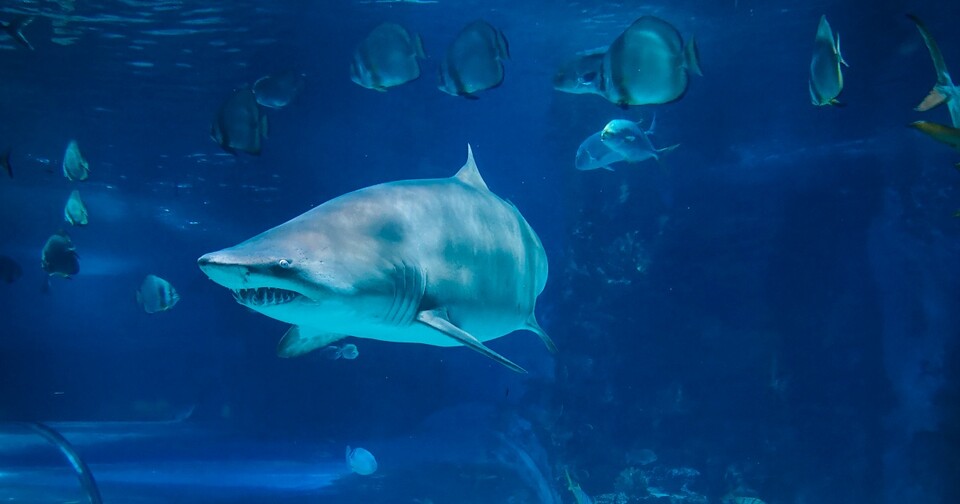
Recently, the presence of sharks in the seas around the Korean Peninsula has been increasing. Species like the great white shark and mako shark, which usually inhabit tropical and subtropical regions, are now migrating northward into the East Sea. Due to the climate crisis, the sea temperatures along the East Coast have risen, leading to an expansion of the territory for certain shark species that prefer warmer waters.
According to the National Institute of Fisheries Science, there are a total of 49 shark species known to distribute the waters around South Korea. Among them, only around 4 to 5 species are considered potentially threatening to humans. Even these sharks mostly mistake humans for prey such as seals or sea lions.
However, as the vacation season approaches, it's important to be aware of which sharks are present along the Korean coast and understand their characteristics. Let's introduce a few of the shark species that can be found in the waters around South Korea.
뉴스펭귄 기자들은 기후위기와 그로 인한 멸종위기를 막기 위해 헌신하고 있습니다.
정기후원으로 뉴스펭귄 기자들에게 힘을 실어 주세요.
이 기사 후원하기
(*This information is based on the 'Classification Guide of Sharks in the Waters around Korea,' published by the National Institute of Fisheries Science in 2022.)
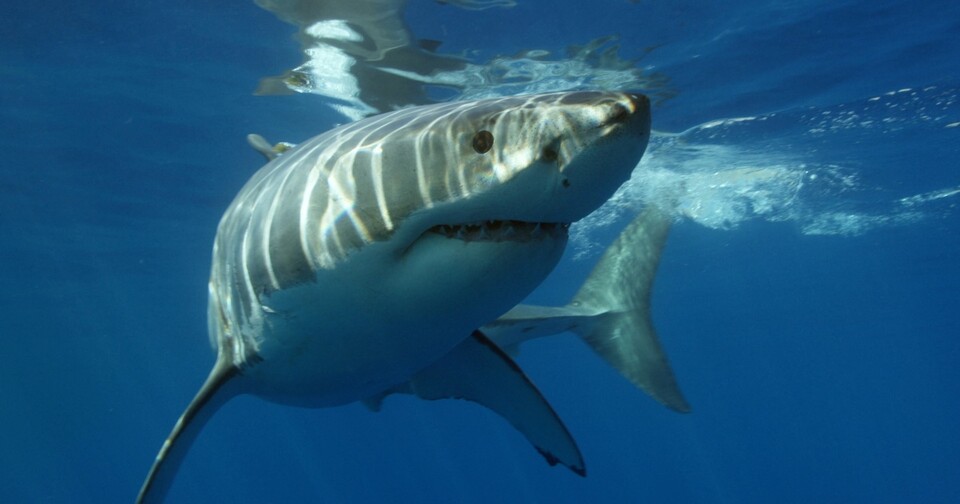
1. Great white shark
The great white shark is well-known to people due to its appearance in the director Steven Spielberg's movie 'Jaws'. While it's often depicted as a man-eating predator, this is not true.
According to a recently published study, the great white shark is not aggressive toward humans, and when they do attack, it's likely that they mistake people swimming or paddling on surfboards for prey.
The great white shark inhabits the entire coastal waters of South Korea and is distributed across temperate, tropical, and subtropical regions worldwide.
The snout is pointed and conical, while the body is robust and cylindrical in shape. The dorsal side is a deep shade of gray. The teeth are triangular and have serrated edges.
Adult individuals can grow up to around 6 meters in length. When they are young, they feed on small osteichthyes, but as adults, their diet mainly consists of marine mammals such as seals, sea lions, and dolphins.
Great white sharks swim individually or in small groups of one to two individuals. However, areas with abundant food sources can gather of around 10 sharks.
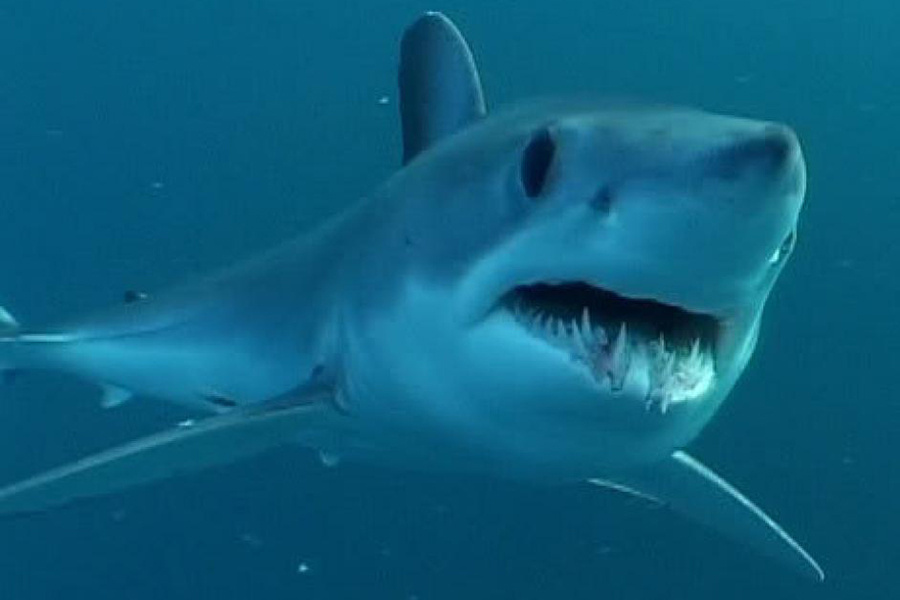
2. Mako shark
On the 8th of the past month, a shark believed to be a mako shark was spotted in Pohang. The mako shark is known to inhabit the entire coastal waters of South Korea and is found in temperate, tropical, and subtropical regions worldwide.
The snout is pointed and conical, while the back is dark blue, and the snout and belly have a whitish tint. The teeth are the shape of a long canine, with a pointy end and curved inwards.
A newborn baby is approximately around 60 to 70cm in length, while an adult can grow up to about 4 meters. They mainly inhabit warm seas with depths ranging from 0 to 150 meters, but they can also be found in areas with temperatures below 16°C.
The mako shark is a carnivorous fish that preys on other shark species as well. It primarily consumes bony fish like large temperate basses, pacific herring and tuna, and also feeds on squid.
These sharks weigh approximately around 68kg and it is known that they can consume up to 2kg of food per day.
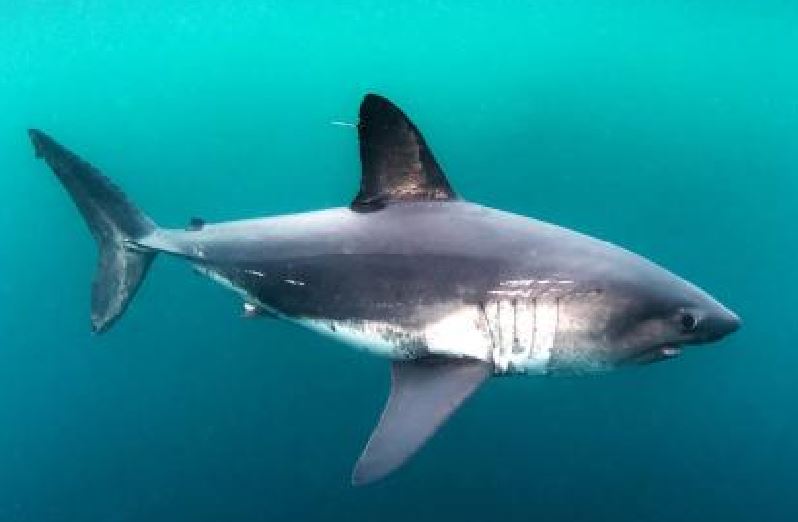
3. Salmon shark
On the 6th of the past month, a salmon shark was found dead caught in a net off the East Sea coast. Initially, this shark was identified as a great white shark, but after experts' reexamination, it was confirmed to be a salmon shark.
The salmon shark is mainly found in the East Sea of South Korea and inhabits temperate and subarctic waters, including the Okhotsk Sea, in the North Pacific Ocean.
The salmon shark has a short and pointed snout, and its body is muscular and spindle-shaped. It has a large mouth with sharp, pointed teeth on both jaws. The dorsal side is characterized by a deep blue coloration, while the ventral side is lighter in color.
Adults can grow up to about 3 meters in length and are known for their swiftness. They feed on bony fish such as salmon. They inhabit cold waters and are capable of maintaining a body temperature higher than the sea temperature.
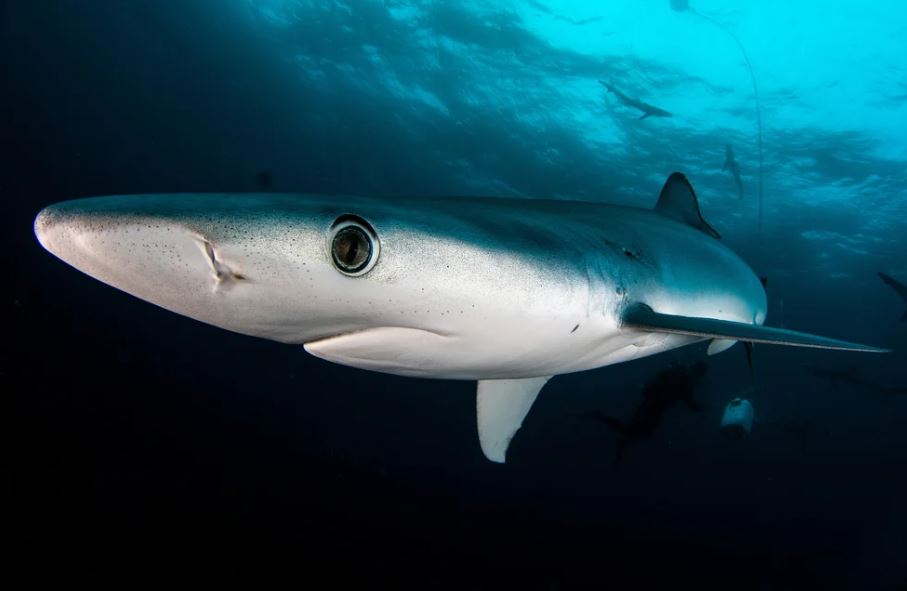
4. Blue shark
The blue shark is found in South Korea, including Jeju Island, as well as in the South Sea and the East Sea. It has a global distribution across temperate, tropical and subtropical waters, and is known to have the widest distribution ranges among shark species.
The deep blue coloration on its back led to it being named the 'Blue Shark'. Its sides are a light blue or silvery blue, and the belly can be pearlescent or white, while the pectoral fins are dark. Its body is slim and spindle-shaped, with long pectoral fins. When viewed from below, it has a pointed, fusiform snout.
Adults can grow up to about 4 meters and they feed on bony fish, squid, small sharks, seabirds and marine mammals. They are primarily active at night and tend to roam far out at sea.

5. Smooth hammerhead
The smooth hammerhead has a distinctive appearance with its head resembling a hammer, featuring eyes at each end. This unique shape makes it easily distinguishable from other sharks. Due to its hammer-like head, it's also referred to as the 'Hammerhead Shark'.
It inhabits waters throughout all of South Korea's maritime territory and is found in temperate and subtropical regions of the Pacific, Atlantic and Indian Oceans. Adults can grow up to around 4 meters and belong to a relatively large medium-sized shark.
The smooth hammerhead has a diverse diet that includes bony fish such as pacific herring and sea bass, as well as small shark species. It also consumes rays, crustacea like crabs, shrimps, and cephalopoda like squid and octopus. They can be solitary or travel in groups of up to several dozen individuals.
뉴스펭귄은 기후위험에 맞서 정의로운 해결책을 모색하는데 초점을 맞춘 국내 유일의 기후뉴스입니다. 젊고 패기 넘치는 기후저널리스트들이 기후위기, 지구가열화, 멸종의 위험성을 알리기 위해 분투하고 있으며, 그 공로로 다수의 언론상을 수상했습니다.
뉴스펭귄은 억만장자 소유주가 없습니다. 상업적으로나 정치적으로나 일체의 간섭이 없기 때문에 어떠한 금전적 이익이나 정치적 이해관계가 우리의 뉴스에 영향을 미치지 못합니다.
뉴스펭귄이 지속가능하기 위해서는 여러분의 지원이 필요합니다. 우리는 여러분의 후원을 밑거름으로, 게으르고 미적대는 정치권에 압력을 가하고 기업체들이 기후노력에 투자를 확대하도록 자극할 수 있습니다.
아무리 적은 금액이라도 여러분의 소중한 후원은 기후위험으로부터 우리를 지키는데 크게 쓰입니다.
뉴스펭귄을 후원해 주세요. 후원신청에는 1분도 걸리지 않으며 기후솔루션 독립언론이 강력한 영향력을 발휘하도록 만듭니다.
감사합니다.
후원하러 가기
